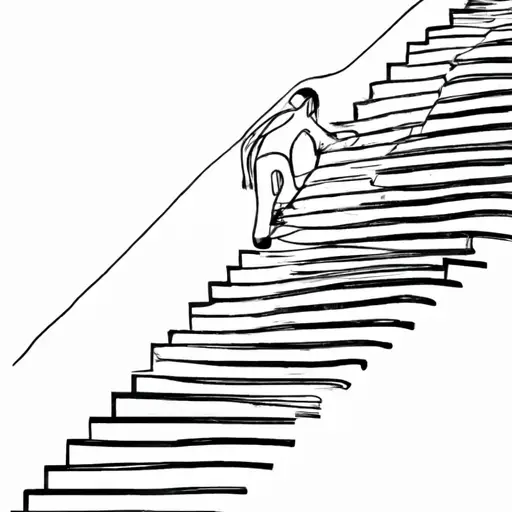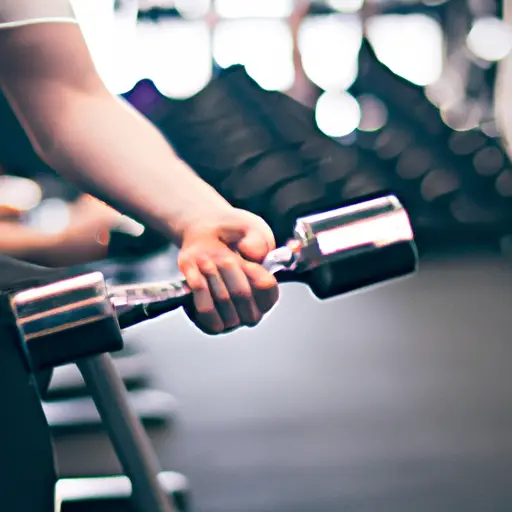Gaining Speed Through Plyometrics Training
I Can’t Believe I Didn’t Know About This Incredible Training Method!
Hey guys, it’s me, your friendly fitness fanatic! I am beyond excited to share this amazing training method that I recently discovered – plyometrics! If you’ve never heard of it before, no worries! I hadn’t either, but now I can’t stop raving about it.
Plyometrics training is a type of workout that involves explosive movements, designed to increase power, speed, and overall athletic performance. The exercises are typically jumping-based, and they help to improve your ability to generate force quickly.
If you’re looking to take your fitness game to the next level, plyometrics training is a must-try! Benefits include increased strength, power, speed, agility, and endurance. Not to mention, it can be a lot of fun and add some variety to your workout routine!
Ready to learn more about this incredible training method? Check out this amazing article that I found, which goes into even more detail about the benefits and types of plyometrics exercises you can try!
Types of Plyometrics Training: Jump Your Way to Fitness
When it comes to plyometrics training, the focus is on explosive movements that increase power, speed, and agility. These exercises involve jumping and hopping, where the muscles apply maximum force in a short period of time. Here are a few types of plyometric exercises that can take your workout to the next level:

Squat jumps are a popular plyometric exercise that work your lower body muscles. Start by standing with your feet shoulder-width apart and then squat down until your thighs are parallel to the ground. Next, explode upwards and jump as high as you can. Land back into a squat position and repeat the movement for a desired number of reps. Squat jumps are an excellent way to improve explosive power and strengthen your hamstrings, quadriceps, and glutes.
Box Jumps
Box jumps are another powerful plyometric exercise that target your lower body muscles. You will need a sturdy box or bench for this exercise. Start by standing in front of the box, then jump up onto it with both feet. Drop down and jump back on the ground. Repeat the movement for desired reps or time. Box jumps help improve your balance, coordination and enhance your overall lower body strength.
Lunge Jumps
Lunge jumps are another popular plyometric exercise that work your quadriceps, glutes, and hamstrings. Start by standing with your feet shoulder-width apart. Then, step forward with one leg while bending your knee at a 90-degree angle. Instead of pushing back up to standing position, you’ll bring both feet off the ground and switch your lead foot in mid-air. Land back down in a lunge position then repeat on the other leg. Lunge jumps are an excellent exercise to improve your power, balance, and cardiovascular endurance.
There you have it, some of the most popular types of plyometric exercises that can take your workouts to the next level. Incorporating these exercises regularly into your fitness routine can help you experience significant benefits in your strength and endurance.
Get Fit with Plyometrics Training: Here’s How
So, you’ve learned about the benefits and different types of plyometrics training, but how can you incorporate it into your workout routine? Well, I have some tips and tricks that have helped me and can work for you too!
1. Start Slowly
Firstly, it’s important to note that plyometrics should be a supplementary tool to your current workout regime. Don’t start with anything too intense right off the bat, especially if you’re new to working out. Start with low-intensity exercises like jumping jacks or step-ups and gradually work your way up.
2. Plan Your Routine
Plyometrics should be done once or twice a week with plenty of rest in between. Plan your routine in advance, including what exercises you want to do and how many sets and reps you’ll complete. Remember, quality over quantity. It’s better to do a few reps perfectly than a bunch sloppily.
3. Warm Up and Cool Down
Before starting any plyometrics exercise, it’s important to warm up properly. Jogging or jumping rope for a few minutes will get the body ready for the high-intensity exercises ahead. And don’t forget, after you’ve completed your routine, cool down with some stretching exercises to avoid injury and promote flexibility.
4. Technique Matters
During any plyometric exercise, form and technique are crucial to prevent injury and improve results. Be sure to land softly, with your knees slightly bent and core engaged. Aim to explode off the ground using your legs, not your upper body.
5. Mix it Up
No one wants to do the same old exercises every week, so mix it up! Incorporate different types of plyometric exercises, such as lunge jumps, box jumps, and squat jumps. Keep your workouts fresh and exciting to stay motivated and engaged.
With these tips and tricks, you’ll be able to easily incorporate plyometrics into your workout routine. Remember to start slowly, plan your routine, warm up and cool down, focus on technique, and mix it up to keep things interesting. Happy training!
Safety First: The Lowdown on Plyometrics Training
Before you start any plyometrics training routine, it’s important to consult with a fitness professional to ensure that you’re ready for the exercises and that you’re doing them correctly. In my experience, it’s also crucial to start with low impact or modified versions of the jumps until you become comfortable with the moves.
Another safety consideration is to make sure that you’re working on a surface that provides enough cushioning for your joints. Avoid hard or uneven surfaces like concrete or grass, and opt for gym mats or springy floors instead. Also, make sure that you’re wearing appropriate footwear that provides proper support and stability.
It’s important to listen to your body when doing plyometrics training. If you feel pain or discomfort during any exercise, stop immediately and take a break. Pushing through the pain can cause serious injuries like sprains, strains, or even fractures.
Finally, remember that plyometrics training is a high-intensity workout that can put a lot of stress on your body. It’s important to incorporate rest days into your routine to give your body time to recover and avoid overtraining. And speaking of recovery, be sure to stretch before and after your workouts to help prevent injuries and reduce soreness.
In summary, plyometrics training can be a safe and effective way to improve your athletic performance. But it’s important to take proper precautions, listen to your body, and seek professional guidance to make sure you’re doing it right. Happy jumping!
Wrapping it Up: Plyometrics Training
So there you have it, folks! Plyometrics training is a great way to improve your overall athleticism and take your fitness routine to the next level. By incorporating explosive movements like squat jumps, box jumps, and lunge jumps, you can build strength, power, and agility.
But before you jump into plyometrics training, it’s important to remember some key safety considerations. Make sure to warm up properly, wear appropriate footwear, and choose a surface that will absorb shock and reduce the risk of injury. It’s also important to start slow and gradually increase the intensity and volume of your workouts.
As with any form of exercise, it’s important to listen to your body and pay attention to any signs of pain or discomfort. If you experience any pain or discomfort, it’s best to stop and seek advice from a qualified fitness professional.
At the end of the day, plyometrics training can be a fun and effective way to improve your fitness and take your workouts to the next level. So why not give it a try and see what kind of results you can achieve?






